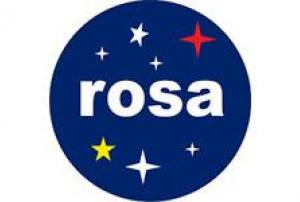According to the Action Team on Near-Earth Objects established by the Committee on the Peaceful Uses of Outer Space , a near-Earth object (NEO) is an asteroid or comet whose trajectory brings it within 1.3 astronomical units of the Sun and hence within 0.3 astronomical units, or approximately 45 million kilometres, of the Earth’s orbit. This includes objects that will come close to the Earth at some point in their future orbital evolution. NEOs generally result from objects that have experienced gravitational perturbations from nearby planets, moving them into orbits that allow them to come near to the Earth.
A near-Earth asteroid is said to be a potentially hazardous asteroid when its orbit comes within 0.05 astronomical units of the Earth’s orbit and it has a measured absolute magnitude H<22 mag (an estimated diameter greater than 140 meters).
The International Asteroid Warning Network (IAWN) proposed the following definition: An asteroid, meteoroid, or a comet as it passes near Earth, enters the Earth’s atmosphere, and/or strikes the Earth, or provokes changes in inter-planetary conditions that effect the Earth’s magnetosphere, ionosphere, and thermosphere. Criteria and thresholds related to this definition are as follows:
- The probability that a NEO will impact Earth (either 1 per cent for warning and 10 per cent for terrestrial preparedness planning);
- The probable size, or at least its luminosity in the night sky (greater than 10 meters or at least absolute magnitude 28);
- How far in the future the NEO will impact Earth (20 years).
IAWN and SMPAG Proposed criteria and thresholds for impact-response actions:
IAWN and the Space Mission Planning Advisory Group (SMPAG) have agreed on the following criteria and thresholds for impact-response actions:
(1) IAWN shall warn of predicted impacts exceeding a probability of 1 per cent for all objects characterized to be greater than 10 meters in size, or roughly equivalent to absolute magnitude of 28 if only brightness data can be collected.
Rationale: Impact probabilities greater than 1 per cent are rare. Most objects greater than 10 meters in size will have effects (air blast and pieces) that could reach the Earth’s surface. IAWN is compelled to warn populations if bodies will have effects that reach the ground. Setting threshold at 1 per cent is a compromise between not being overly alarmist and not warning too late for necessary action to be initiated. It is a probability figure that individuals and governments can comprehend. An alert such as this demonstrates that the IAWN is functioning. Further, it ensures the flow of communications from IAWN to the public and the United Nations.
(2) Terrestrial preparedness planning is recommended to begin when warned of a possible impact:
• Predicted to be within 20 years,
• Probability of impact is assessed to be greater than 10 per cent
• Object is characterized to be greater than 20 meters in size, or roughly equivalent to absolute magnitude of 27 if only brightness data can be collected.
Rationale: Terrestrial preparedness and the increased potential for impact will also involve determination of a “risk corridor” from objects with 10 per cent impact probabilities and impacts in less than 20 years. This provides populations and population centres on the Earth information to begin preparations for emergency preparedness if needed. The surprising effects of the Chelyabinsk event in 2013 from an object ~18 meters in size in turn, led to the establishment of a lower limit (20 meters) in these threshold criteria.
(3) SMPAG should start mission option(s) planning when warned of a possible impact:
• Predicted to be within 50 years,
• Probability is assessed to be greater than 1 per cent, and
• Object is characterized to be greater than 50 meters in size, or roughly equivalent to absolute magnitude of 26 if only brightness data can be collected.
Rationale: Several decades warning, if available, enables sufficient lead time to mount characterization missions. If a 1 per cent probability on a 100-meter object is assessed, SMPAG will be informed immediately following verification of the precise orbit. Part of such a characterization mission would likely deploy a transponder with the object.


